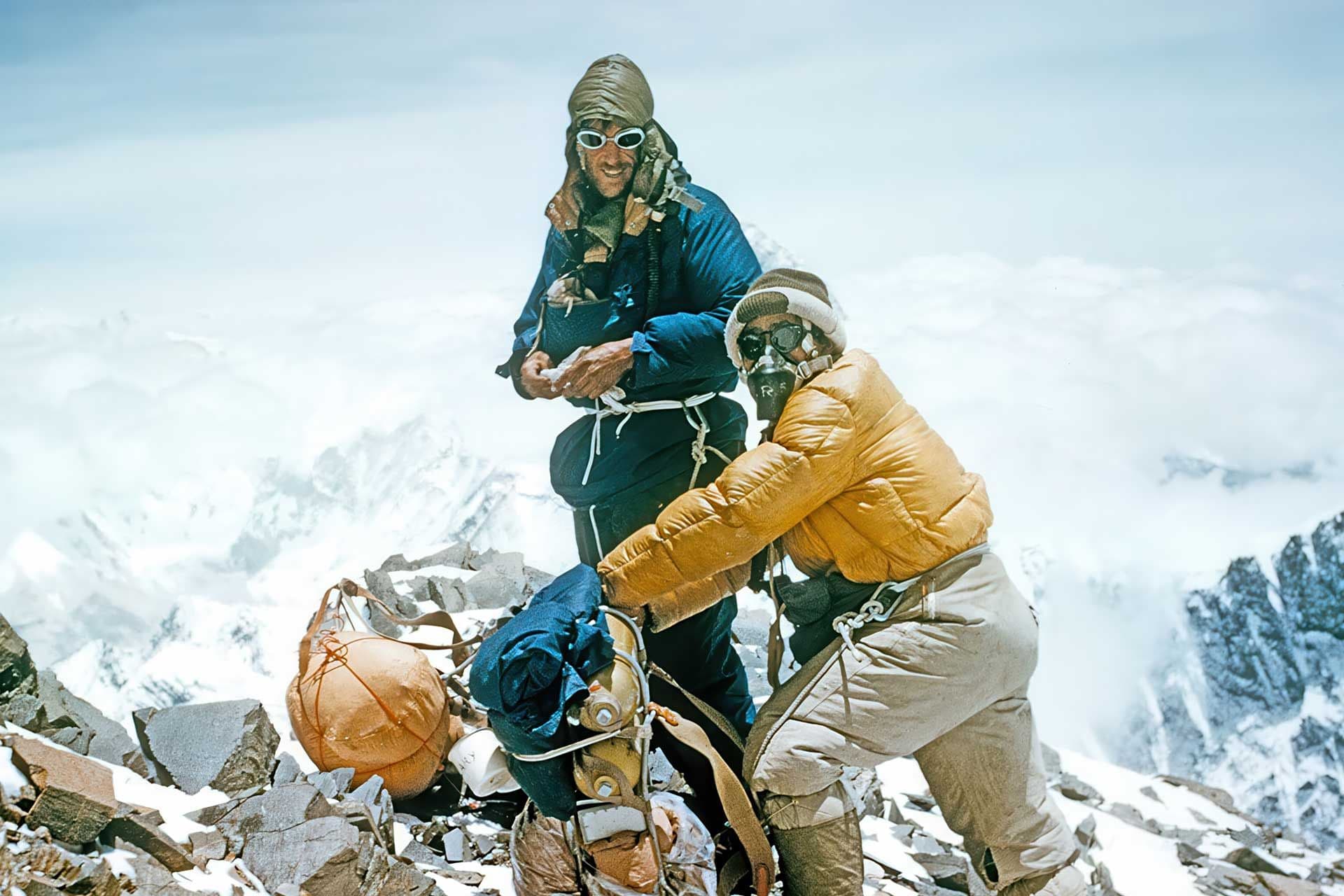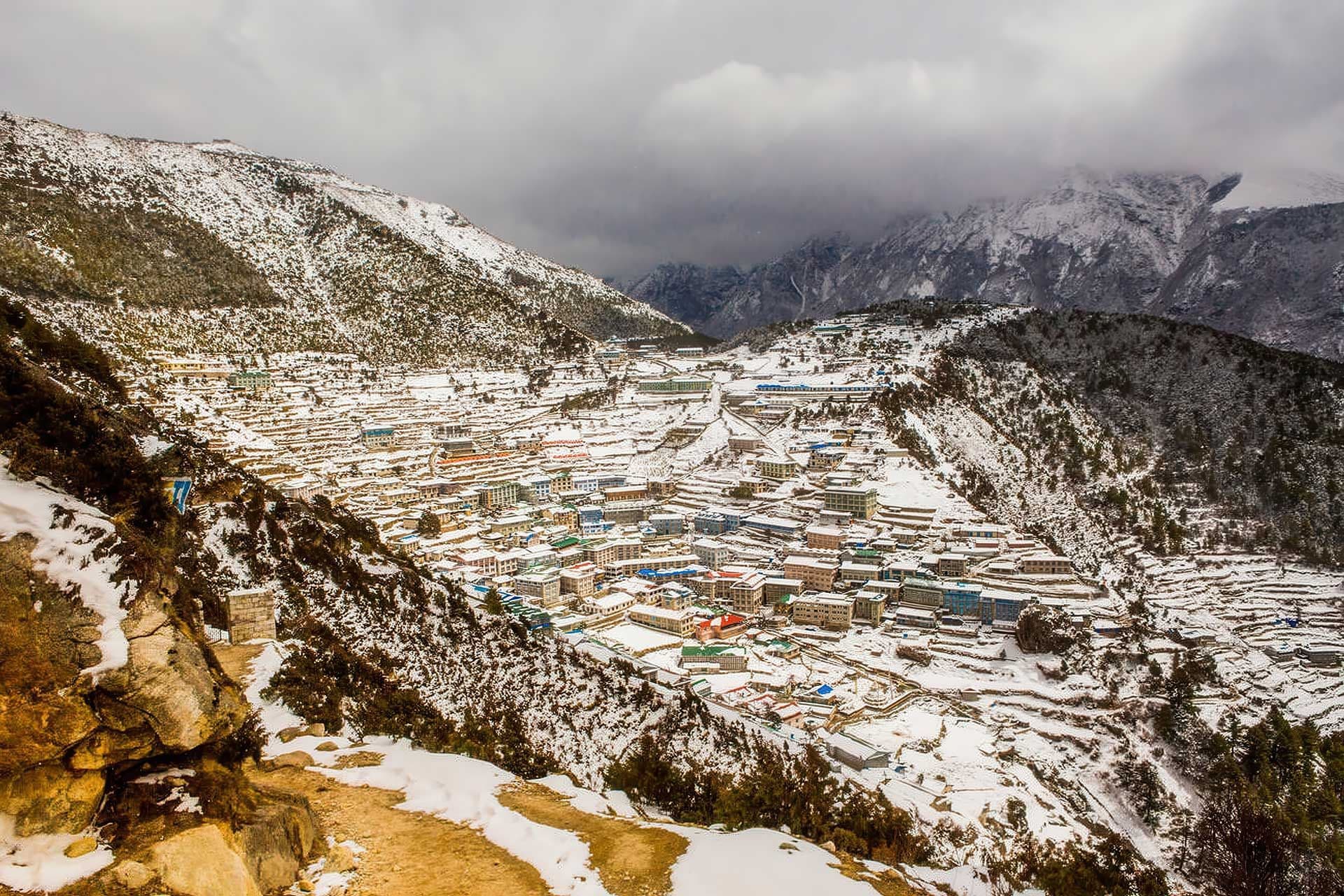Walking the Trail to Everest
Mahacaraka® Press
Rising to a staggering 8,848.86 metres above sea level, Mount Everest stands as the highest point on Earth. Known as Sagarmatha in Nepali and Chomolungma in Tibetan, meaning “Goddess of the Sky” and “Holy Mother” respectively, this colossal peak straddles the border between Nepal and the Tibet Autonomous Region of China. More than just a geographical feature, Everest has become a symbol of endurance, human ambition, and the delicate balance between reverence and risk.
The mountain was first measured during the Great Trigonometrical Survey of British India in the 19th century. Although several peaks were evaluated as potential “highest points,” Everest, then referred to as Peak XV, was officially declared the tallest in 1856. It was named after Sir George Everest, a British surveyor-general of India, although he had no direct involvement with the peak’s discovery. The name was chosen due to the difficulty in establishing a consistent local name across various regions and dialects.
For decades, the mountain remained unconquered, its summit shrouded in both cloud and mystery. It was not until 29 May 1953 that Sir Edmund Hillary of New Zealand and Tenzing Norgay, a Sherpa of Nepal, became the first confirmed climbers to reach the summit. Their historic ascent, made via the South Col route, became a defining moment in mountaineering history and a source of national pride for Nepal and Commonwealth countries alike.
Since then, the mountain has witnessed triumphs and tragedies in equal measure. The 1996 disaster, which claimed eight lives in a single storm, exposed the increasing commercialisation and overcrowding on the peak. More recently, the 2015 earthquake in Nepal triggered an avalanche at Base Camp, killing 22 people and further intensifying global scrutiny over safety and environmental concerns in the Himalayas.

Yet despite these dangers, Everest continues to attract climbers from around the globe. Most expeditions begin in Kathmandu, where climbers finalise permits and supplies before flying to Lukla, home to one of the most challenging airports in the world. From here, trekkers embark on a 10 to 14-day journey to Everest Base Camp (EBC), situated at an altitude of 5,364 metres. The trek, though non-technical, is physically demanding due to altitude, weather conditions, and steep gradients.
Along the way, the trail winds through a mosaic of Sherpa villages, suspension bridges draped in prayer flags, and ancient monasteries clinging to mountainsides. Namche Bazaar, the bustling trading hub of the Khumbu region, offers a crucial acclimatisation stop and a chance to learn about Sherpa culture and Buddhism at the local museum. Tengboche Monastery, perched at 3,867 metres, provides spiritual reflection amidst views of Ama Dablam and the surrounding peaks.
Everest Base Camp itself is not a place of leisure but a staging ground for summit attempts. During peak season, which falls between April and May, the camp swells with brightly coloured tents, satellite dishes, and climbers awaiting the optimal weather window. Helicopters buzz overhead, carrying supplies and sometimes performing high-risk rescues. The icefall doctors, a specialised team of Sherpas, prepare and maintain the route through the Khumbu Icefall, one of the most dangerous sections en route to the summit. Crevasses, falling ice towers, and constant movement make it a test of both nerve and precision.
There are two main climbing routes to the summit: the South Col route from Nepal and the North Ridge route from Tibet. The southern approach is more commonly used due to better accessibility and logistics. However, it is not without peril. Climbers must navigate the treacherous Lhotse Face, pass through the “Death Zone” above 8,000 metres where oxygen levels are perilously low, and finally push toward the summit from the South Summit along the narrow, wind-swept ridge.
Despite modern gear, supplemental oxygen, and trained guides, Everest remains an unforgiving environment. Frostbite, altitude sickness, and unpredictable storms pose constant threats. Yet the challenge is also what draws many to the mountain. For some, it is the fulfilment of a lifelong dream. For others, a tribute to a loved one, a personal reckoning, or simply the pursuit of the extraordinary.

The mountain has also become a focal point for environmental and ethical debates. Human waste, discarded gear, and the presence of hundreds of climbers each year have led to serious ecological degradation. In response, both Nepalese and Chinese authorities have introduced stricter regulations, cleanup campaigns, and limited the number of permits issued annually. Local NGOs, alongside Sherpa communities, continue to advocate for sustainable mountaineering and cultural preservation.
Beyond the statistics and summit logs, Everest holds deep spiritual significance for the local population. The Sherpa people, whose lives are intrinsically tied to the mountain, consider it sacred. Expeditions often begin with a pujaceremony, where climbers seek blessings from the gods for a safe journey. It is a ritual that reminds even the most seasoned alpinist of the forces beyond human control.
In recent years, alternative treks around the Everest region, such as the Gokyo Lakes trail and the Three Passes route, have gained popularity among those seeking solitude and a broader perspective of the Himalayas without the crowds of EBC. These trails offer breathtaking panoramas of Everest, Lhotse, and Makalu, and provide a deeper immersion into the highland landscapes and cultures of eastern Nepal.
Mount Everest is more than a mountain. It is a crossroads of adventure, spirituality, history, and human aspiration. Whether approached through the lens of exploration, environmentalism, or cultural insight, it continues to captivate the imagination in ways few other places on Earth can. Its allure lies not only in its formidable height but in the stories — of those who climb it, live near it, and are shaped by it — that echo across its icy ridges and wind-carved cliffs.